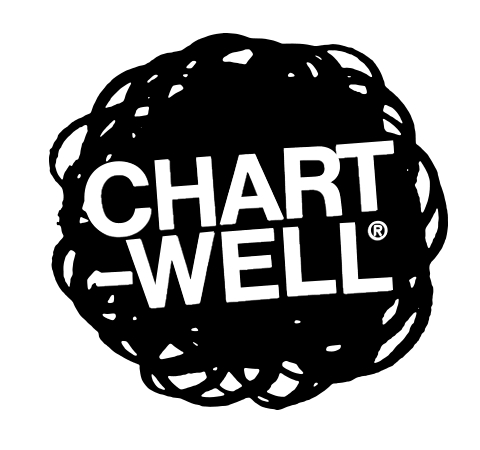Prompts
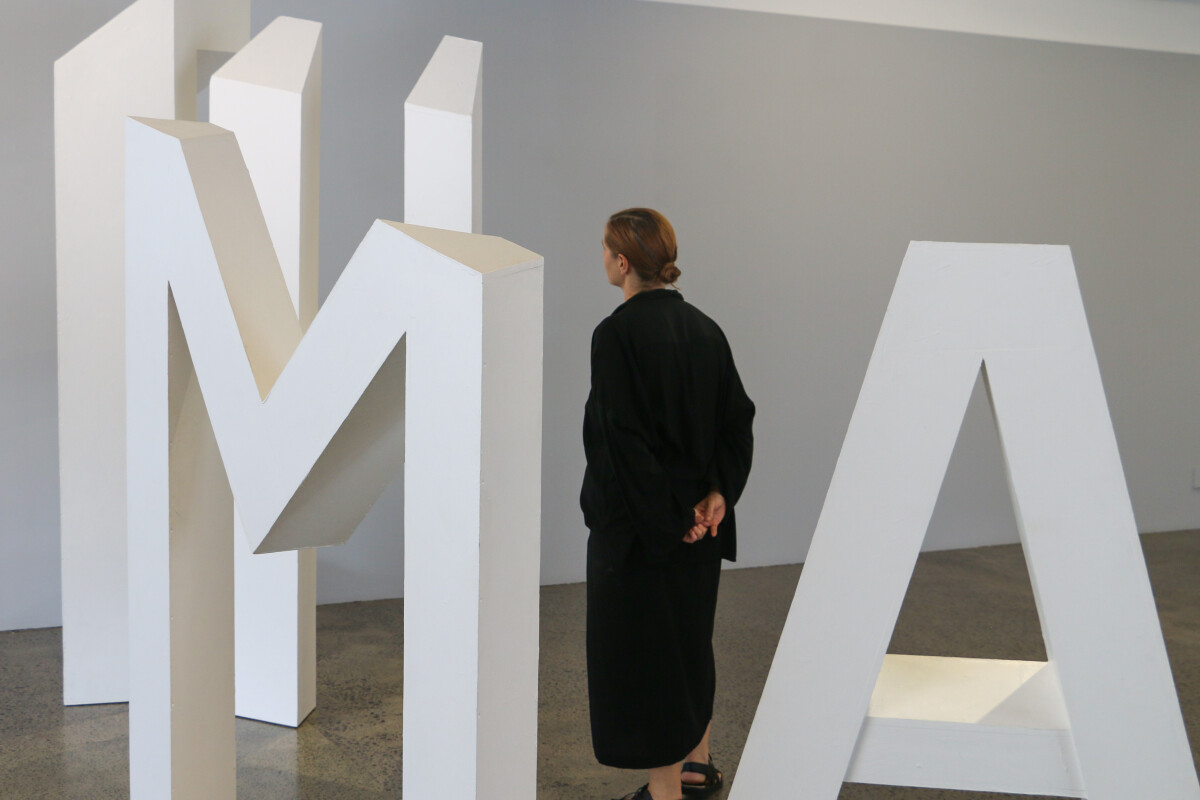
Prompts, 2024. Installation view. Courtesy of Artspace Aotearoa.
Prompts
-
Where
Artspace Aotearoa
-
When
1 February 2025 - 17 April 2025
Consider the works in this exhibition as experiments in portraiture. In their decades-long practices, Lubaina Himid and Michael Parekōwhai have scrutinised their respective socio-political contexts to explore the possibilities of identification and misrecognition. In their wide-ranging work, both artists have grappled with identity and how the languages of visual art can play an essential role in enlarging societal conversation on participation and representation.
In the English language, the indefinite article is used when the identity of the noun is not known (a, an, some). This accounts for language's inability to capture the full breadth of the noun, whether that be an object, person, place, or experience. The indefinite article describes a limit of language, but as with the Artspace Aotearoa annual question “is language large enough?”, it is also an opportunity to closely examine context.
This exhibition presents the work of Lubaina Himid and Michael Parekōwhai, who have sharply scrutinised their respective socio-political contexts through decades-long practices. In their wide-ranging work, both artists have grappled with identity and how the languages of visual art can play an essential role in enlarging societal conversations on participation and representation.
Himid has been a significant voice in contemporary art since establishing herself as a pivotal figure in the British Black Arts Movement of the 1980s, to working as an educator, and exhibiting widely in the United Kingdom and internationally. Often subverting approaches to visual storytelling, her work explores the figuration of identity. In the series Negative Positives (2007-2017) presented in Prompts she over painted pages from the London-based newspaper The Guardian. Her brightly coloured, delicate paintwork weaves into the printed press and releases a glitch into the system. The Guardian, founded in 1821 in Manchester, has a reputation of high journalistic standards that represents the voice of the British mainstream left. Nevertheless, it exists in the media landscape, where the artist notes until the second half of the 1980s it was rare to see a Black person's face in print in the United Kingdom. These drawings present snippets of life where people suffer, play, rise up, and continue on. By hijacking the serial nature of the newspaper format, Himid firmly places the brittleness of life's many complex languages into a conversation that unfolds over time. Consider the variations of bodies in action this work presents us with, on the one hand exaggerating the finite nature of living things, and on the other inviting a revelling in potential. Drawing from her background in theatre design, Himid’s Negative Positives and the text Audience as Performer (2021) installed directly onto the gallery wall, artfully allude to action to come.
Although a static sculptural object, The Indefinite Article (1990) acts within the gallery space. Made by Parekōwhai while still a student at the Elam School of Fine Art in Auckland, it can be considered his breakthrough work. It was first presented in the seminal exhibition Choice! (1990) curated by George Hubbard at Artspace Aotearoa as part of the sesquicentenary celebrations for the signing of Te Tiriti o Waitangi, the Treaty of Waitangi. Since striding into the contemporary art conversation, Parekōwhai has continually contributed in a dynamic way as artist and educator. The Indefinite Article presents human-sized, cubist-style letters constructed out of wood, which spell out I AM HE. As an art student Parekōwhai was undoubtedly directed to look at painter Colin McCahon (1919-87). Rather than responding neutrally he was prompted to establish a game. As with Himid’s glitch into the printed press, Parekōwhai takes on McCahon’s I AM (1954), one of his many religious paintings. Whilst addressing local art history, Parekōwhai also speaks to the position of Māori within that locality. ‘He’ is the indefinite article in te reo Māori (a, an, some), but when a macron is added, hē, its meaning becomes: wrong, mistaken, incorrect. By thickening and interlocking multiple variations of local experience, Parekōwahai’s work engages the viewer in an undoing of classical temporal divisions. The work bounds from a foundational expression of metaphysicality (“I am” as uttered to Moses); to the height of modernism in Aotearoa; and to the experience of a young artist beginning to ask questions of their context. How can I participate? What is representation anyway?
Consider the complex network of relationships that make up representational and participatory society: subjects, social institutions, history, and the media. Both artists implicate themselves into this network by toying with misrecognition as an unavoidable aspect of these complex relationships and the significant differences that various social groups experience. Himid and Parekōwhai both experiment with the genre of portraiture as a means to tussle with established rules of engagement. In this tussle, the artworks presented undo habituated perspectives by enabling a literal encounter with various scales of language. The artworks establish an interplay between the formal scales of large and small, delicate and bold, and audience members are invited to join the artists in their ongoing examination of context that transforms definites into indefinites, and exposes possibility.
This exhibition is presented in association with Te Ahurei Toi o Tāmaki Auckland Arts Festival and Te Papa Tongarewa.
Thanks to the British Council New Zealand and the Pacific and Auckland Art Gallery Toi o Tāmaki for supporting this kaupapa.
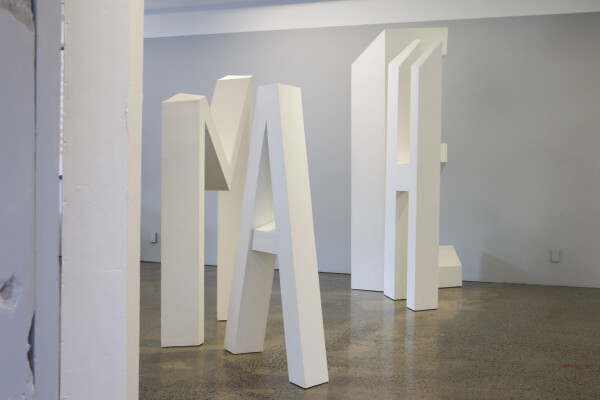
Prompts, 2024. Installation view. Courtesy of Artspace Aotearoa.
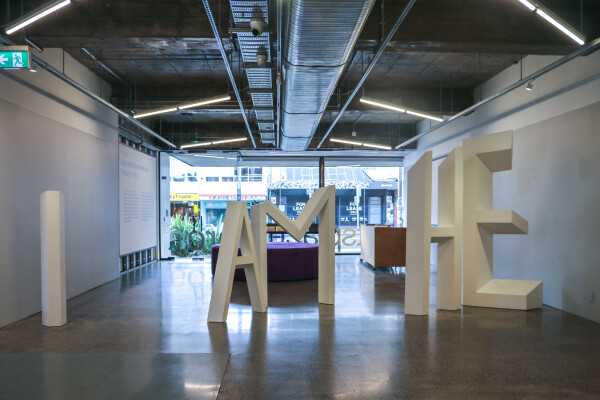
Prompts, 2024. Installation view. Courtesy of Artspace Aotearoa.
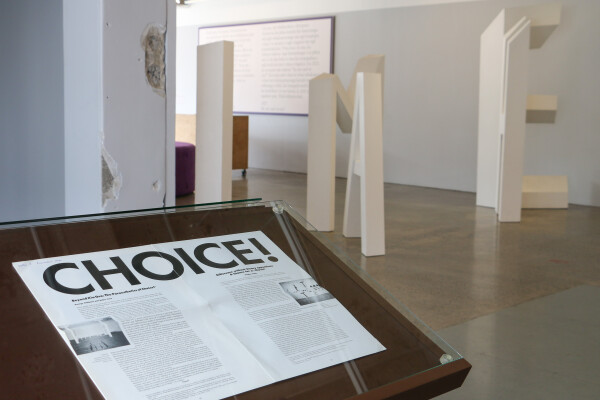 Ephemera, Choice!, 1990. Various original material associated with Choice!,
Ephemera, Choice!, 1990. Various original material associated with Choice!,
an exhibition held at Artspace, as it was then known, in 1990 curated by George
Hubbard. The material includes the exhibition text and press release, a list of
works, selected documentation, and response in the media at the time. Courtesy
of the Artspace Aotearoa archive, E H McCormick Library, Toi o Tāmaki Auckland
Art Gallery.
